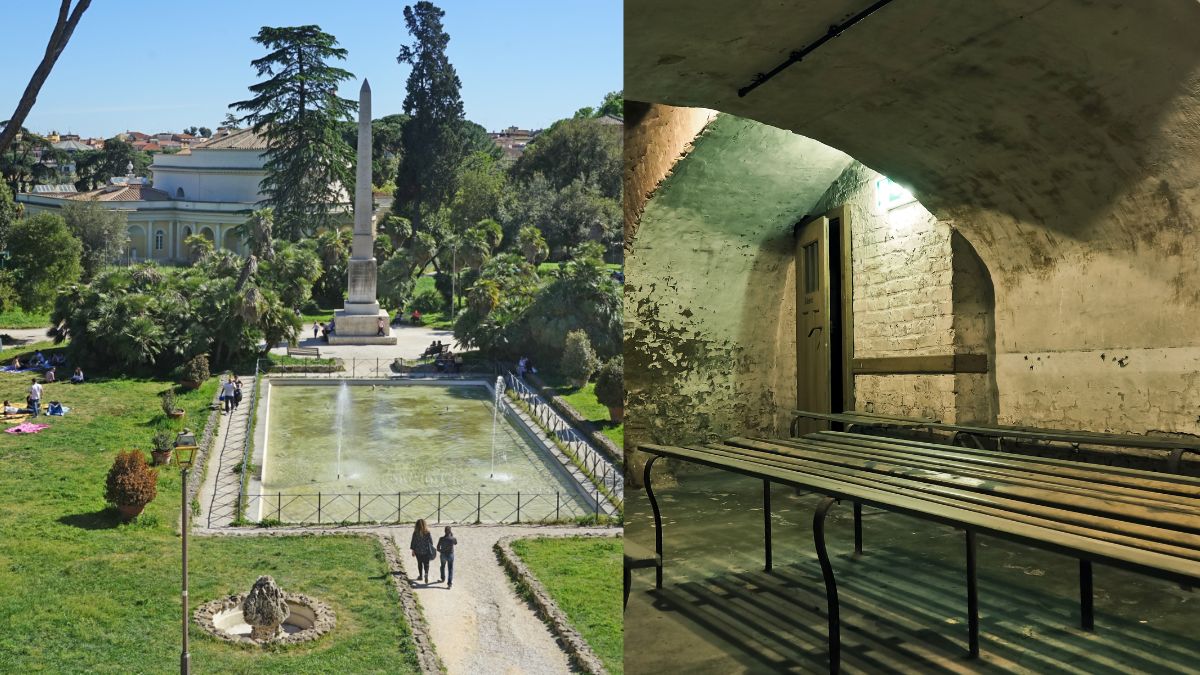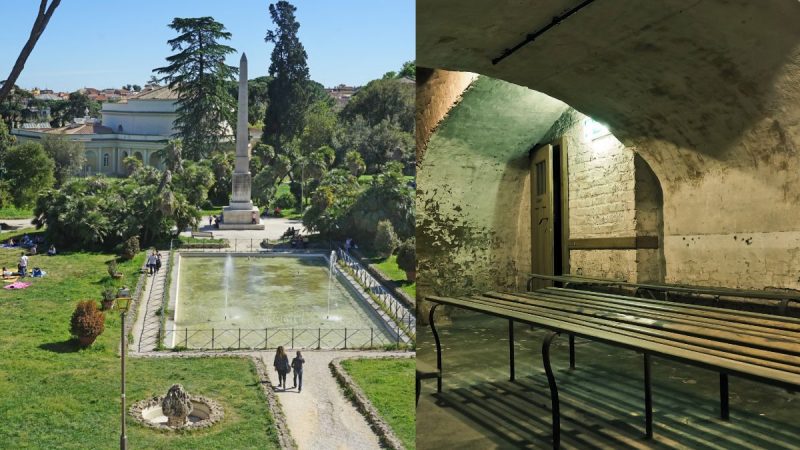Hidden beneath the bustling streets of Rome lies a relic of a bygone era. Italian forces entered the Second World War when they attacked the French Alps in June 1940. Workers started constructing underground shelters behind the scenes to keep fascist dictator Benito Mussolini and his family safe. Eighty-four years later, the public can now access the bunkers beneath Mussolini’s Rome residence, Villa Torlonia.
Benito Mussolini’s Bunkers
The Casino Nobile is one of the most beautiful buildings in Villa Torlonia and it was the dwelling of Benito Mussolini. Here, he ordered the construction of underground bunkers that can still be visited today📌ℹ️#rome #curiosity #discover #IIoverome #Italy pic.twitter.com/hfuHbsXAsM
— Unconventional Rome Tours (@rometours2019) January 2, 2019
Constructed during Mussolini’s reign in the 1930s, the bunker was designed to serve as a sanctuary for the dictator and his inner circle in the event of wartime emergencies. Situated beneath Villa Torlonia, a sprawling estate that once belonged to a noble Roman family, the bunker was shrouded in secrecy, its existence known only to a select few within the Fascist hierarchy. Now, 84 years later, the bunkers beneath Mussolini’s Rome house, Villa Torlonia, have been reopened to the public. There is an immersive multimedia exhibition within the subterranean complex, and visitors can schedule 50-minute guided tours.
From 1929 until 1943, Mussolini called Villa Torlonia home. Along with him lived his wife Rachele and their children Edda, Vittorio, Bruno, Romano, and Anna Maria in the villa. The land was bought by the city of Rome in 1977, and it became accessible to the public in 1978. It is now both a park and a museum.
Also Read: Italy Has Launched A Digital Nomad Visa For Remote Workers & Here’s How You Can Apply For It!
What To Expect From The Tours?
To protect himself from allied air raids, Mussolini built himself a bunker under his large Villa Torlonia in Rome. pic.twitter.com/rgV3dNni6Z
— offal (@offaltube) April 17, 2024
The tours are available from Friday to Sunday, and tickets are approximately INR 1,066 per person. Mondays are the only day that school tours and other special groups don’t operate. The air raid shelter and bunker beneath Casino Nobile are open for guests to explore during the excursions, but access to the converted wine cellar is still restricted. They will hear sounds designed to take them back in time and see images projected on the walls as they explore the two buildings.
Mussolini’s life at Villa Torlonia, where he staged ceremonies, parties, tennis matches, and other events, is featured in the exhibition’s opening section. After that, guests will discover the details of Italy’s involvement in the conflict and what it was like to be stranded in a bunker during a bombing. After the tour, guests descend a steep staircase to enter the partially completed bunker. Noises and vibrations of the ground have been added by the curators to replicate the effects of an air strike.
Visitors to Rome can descend into the depths of the bunker and bear witness to the echoes of a dark and troubled era in Italy’s history.
Cover image credits: Wikimedia Commons
First Published: April 23, 2024 4:24 PM




